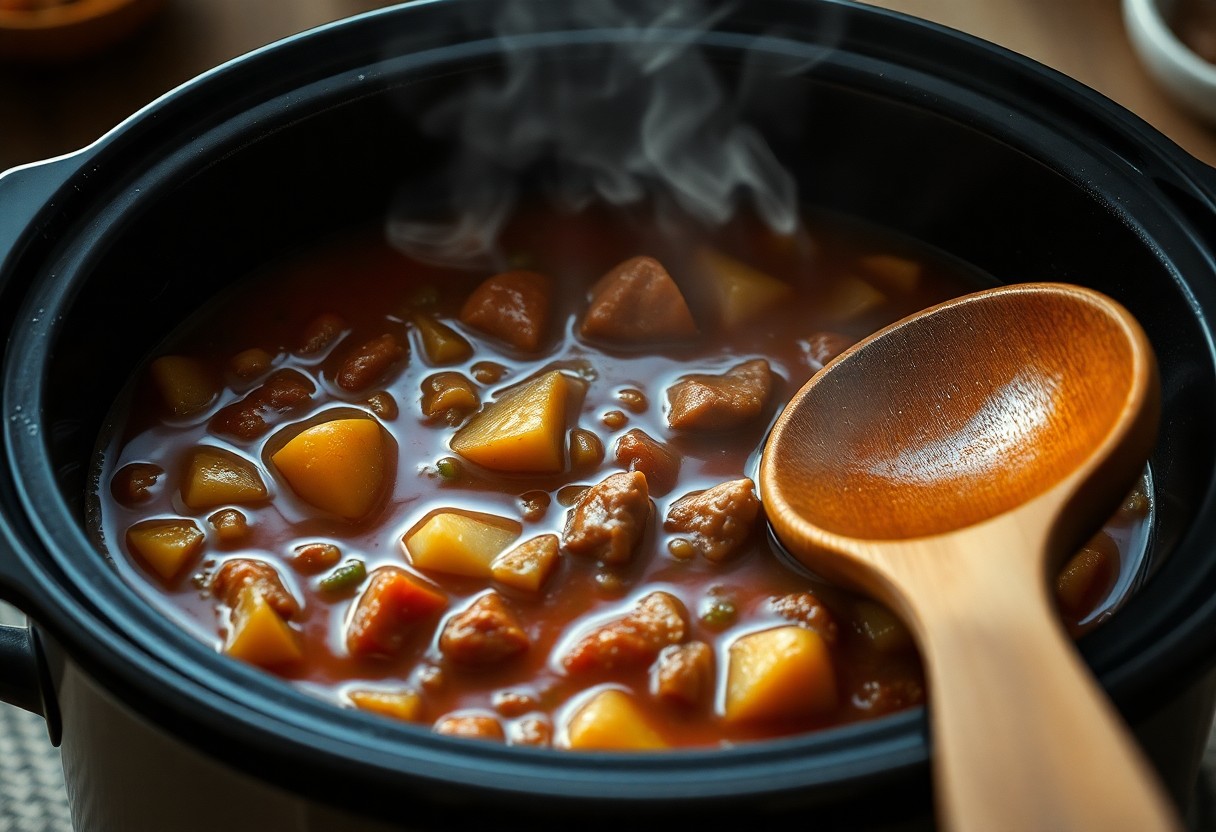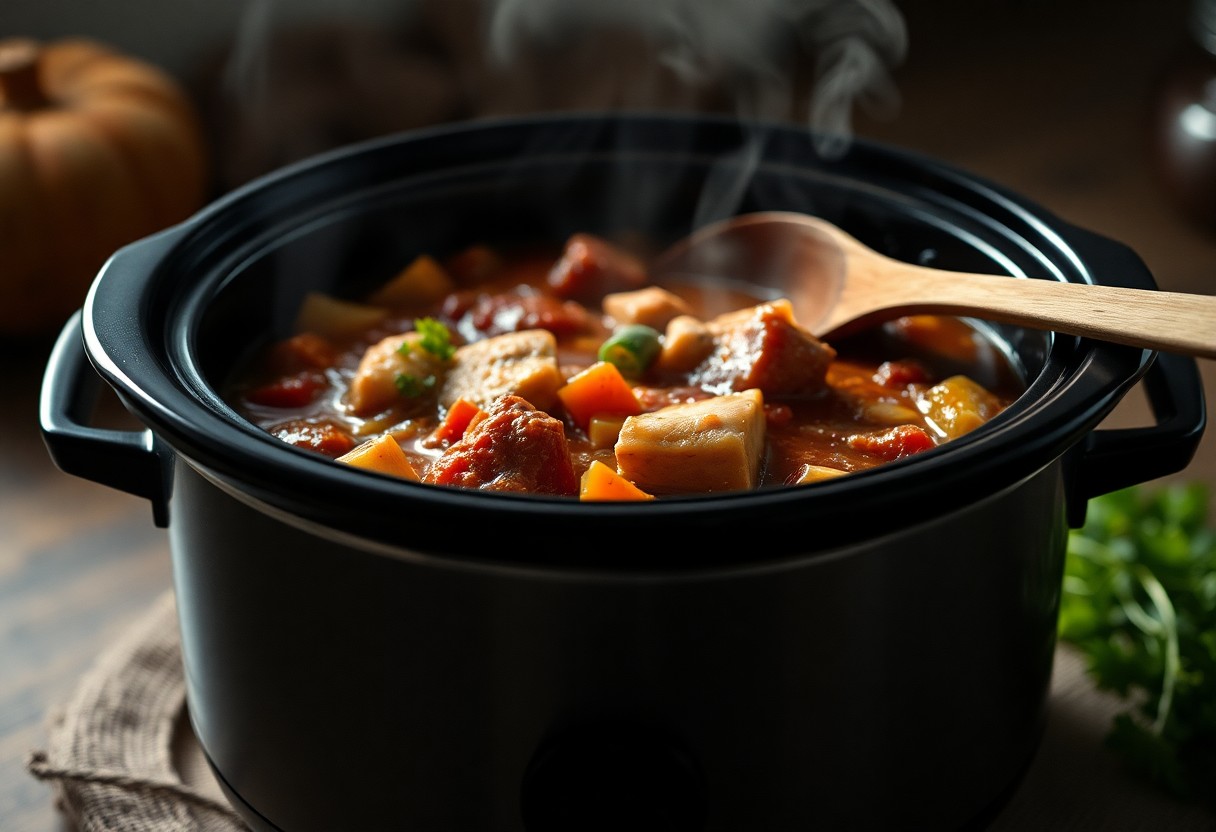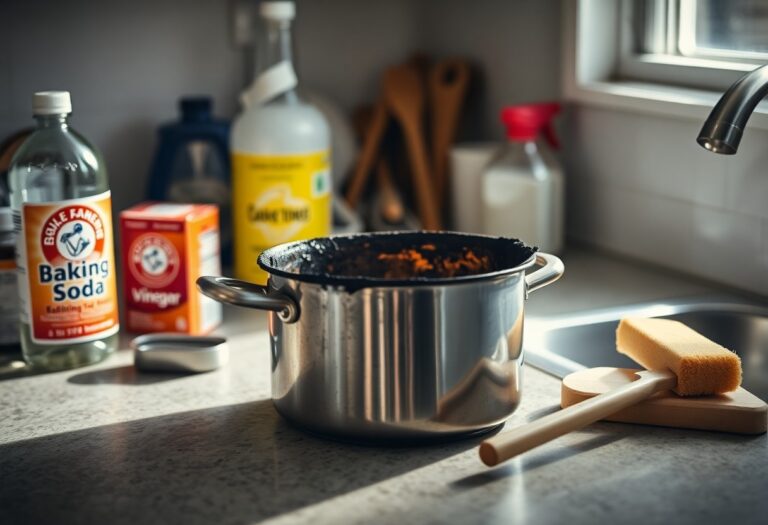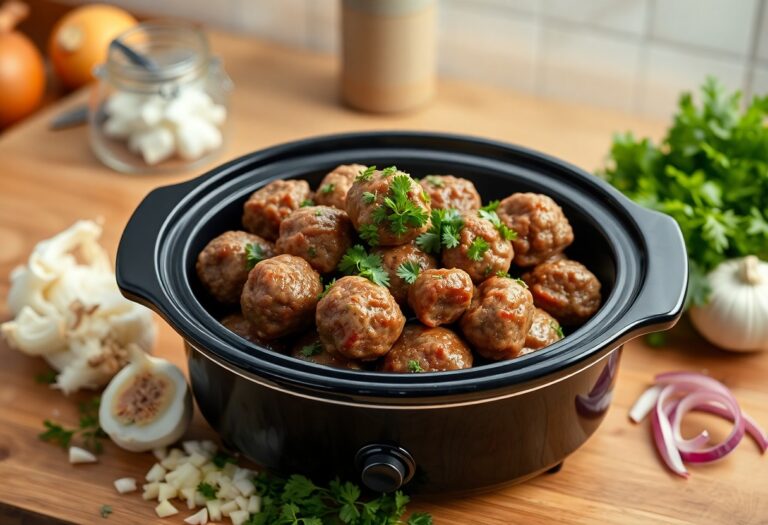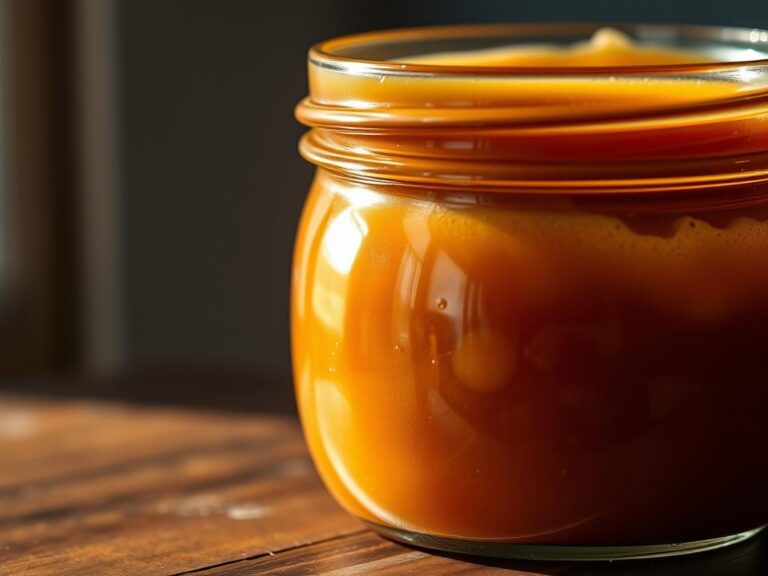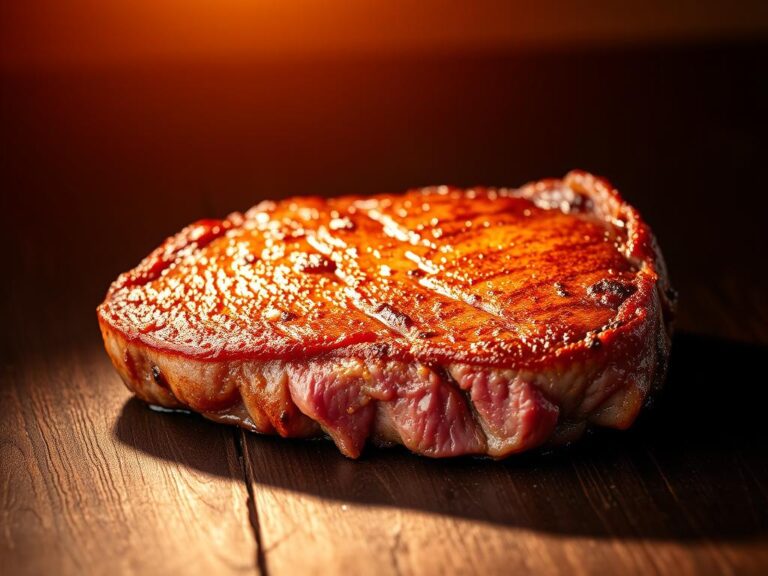how to thicken stew in crockpot
Stew can sometimes turn out thinner than you’d like, but with a few simple techniques, you can achieve that perfect, hearty texture your family will love. In this post, you’ll discover effective methods to thicken your crockpot stew, ensuring it has the richness and consistency to enhance each spoonful. Whether you prefer using natural ingredients or quick fixes, these tips will help you transform your dish and make mealtime even more enjoyable.
The Role of Temperature and Time in Stew Consistency
Understanding the Science of Cooking Time and Heat
| Temperature | Time |
| Low temperature allows for gentle cooking, which keeps meat tender and retains moisture. | Longer cooking times allow flavors to meld and deepen, enhancing overall taste. |
| High heat quickens evaporation, which can concentrate flavors but may also dry out ingredients. | Monitoring timing ensures that vegetables maintain their structure without becoming mushy. |
Understanding Heat’s Impact on Ingredients
The temperature you select for your crockpot significantly influences the end consistency of your stew. Low heat prolongs the cooking process, allowing flavors to intertwine harmoniously and keeping the meat moist. As a result, the proteins in the meat break down slowly, leading to a rich and savory stew. If you crank up the heat, however, the proteins might contract too quickly, resulting in a drier texture that detracts from the overall enjoyment of your dish. Additionally, this can lead to quicker evaporation of the liquid, which can leave you with a stew that’s thinner than desired.
Another aspect to consider when thinking about temperature is the impact on thickeners, such as cornstarch or flour. At higher temperatures, thickeners activate more rapidly; however, if added too soon, they might lose their effectiveness when subjected to prolonged cooking. Balancing the heat and knowing when to incorporate these thickeners is vital for achieving that silky consistency you aim for in your stew.
The Perfect Timing for Thickened Results
Cooking your stew for the right duration is as significant as setting the correct temperature. A general rule of thumb is to aim for at least 6-8 hours on low heat for the best flavor and consistency. During this time, the ingredients break down, resulting in a harmonious blend of textures and flavors. If you’re using quick-thickening agents, such as instant potato flakes or pureed beans, adding them during the last hour of cooking works best. This allows them enough time to infuse their thickening properties without overcooking and losing texture.
Finalizing your stew with a thoughtful approach to timing can elevate it to restaurant-quality levels. If nobody watches the clock, starchy ingredients could start to dissolve and over-thicken the stew. A little observation and adjusting can go a long way. Stews that are allowed to rest after cooking also find a balance; the residual heat will continue the cooking process slightly while allowing the flavors to develop even further.
Essential Thickening Agents You Need On Hand
Flour, Cornstarch, and Their Alternatives
Flour and cornstarch are two of the most common thickening agents you can use to enhance the texture of your stew. To thicken your dish with flour, create a roux by cooking equal parts flour and fat (like butter) to a light brown color before whisking it into your stew. This method not only thickens but also adds a rich, nutty flavor. Alternatively, if you’re opting for cornstarch, it’s best to mix it with cold water to form a slurry before adding it to the hot stew. The advantage of cornstarch is its ability to thicken without needing to cook it for long, and it produces a clearer, more glossy finish compared to flour. For gluten-free options, you can explore alternatives like arrowroot powder or tapioca starch, both of which behave similarly to cornstarch while catering to specific dietary needs.
When to Use Dairy vs. Non-Dairy Options
Incorporating dairy such as heavy cream or sour cream at the end of your cooking process can add an indulgent richness to your stew. Dairy thickens and provides creaminess while balancing out spicy or acidic flavors, making it a delicious choice for stews that have a tomato base or feature robust seasonings. On the flip side, non-dairy options like coconut milk or almond milk work well for those following plant-based diets or managing lactose intolerance. Coconut milk brings a hint of sweetness and a tropical flair, which pairs beautifully with curries and Asian-inspired stews, while almond milk is a lighter alternative that can help round out flavors without overpowering them.
Choosing between dairy and non-dairy thickening agents often depends on the type of stew you are preparing. For example, if your dish is hearty and meat-based, dairy can enhance richness without overwhelming the other flavors. Non-dairy options, on the other hand, allow for a versatile range when creating lighter stews or those centered around vegetables, providing depth while keeping the nourishing elements intact.
Techniques for Incorporating Thickening Agents
Creating Slurries for a Smooth Transition
To achieve a velvety texture in your stew without clumps, creating a slurry is an efficient method. Mix equal parts of cold water or stock with your chosen thickening agent, such as cornstarch or flour, in a separate bowl. This mixture should be free from lumps to ensure that your stew maintains a consistent thickened texture. Once your stew is nearly done cooking, slowly pour the slurry into the pot while stirring gently; this prevents any sudden changes in consistency and allows for even distribution throughout the dish.
For the best results, consider using a whisk to combine the slurry ingredients thoroughly. A whisk can help break up any small clumps that might form when you’re mixing the slurry, and it’s particularly effective for dispersing cornstarch. Additionally, allow the stew to simmer for a few more minutes after adding the slurry to fully activate the thickening properties of the agent. This will also allow the flavors to meld beautifully, enhancing the overall taste of your dish.
Timing Your Addition for Optimal Results
Adding thickening agents at the right moment is crucial for achieving the desired thickness in your stew. If you add your thickener too early in the cooking process, the prolonged exposure to heat can result in a thinner consistency, as the thickening properties may break down over time. Generally, aim to incorporate your thickening agents in the final 30 minutes of cooking to ensure they perform effectively, allowing enough time to thicken while not overwhelming the other flavors.
One strategy involves observing the stew’s bubbling activity; once it starts to gently bubble, it signals that the heat is just right for the thickening agent’s activation. Should you find that your stew still hasn’t reached the thickness you prefer, it’s possible to repeat the process with additional slurries. Just make sure to give each batch time to simmer so that it has a chance to fully activate, blending seamlessly with the other ingredients.
Enhancing Flavor While Thickening
Balancing Seasonings to Avoid Overwhelm
As you thicken your stew, the flavor profile can shift, often requiring a careful touch with seasonings. Concentrated ingredients like flour, cornstarch, or even pureed vegetables can amplify flavor intensity, leading to a dish that may taste too salty or overpoweringly seasoned. Taste your stew after adding a thickening agent, adjusting seasonings incrementally. A good rule of thumb is to enhance flavors gradually, checking after each adjustment. If you find you’ve added too much salt or spices, adding a small amount of sugar or more liquid can often help rebalance the dish without compromising the texture you’ve worked to achieve.
Creative Add-Ins for Texture and Taste
Elevating your stew goes beyond mere thickening; it’s about enhancing the overall experience with complementary textures and flavors. Ingredients like diced potatoes, lentils, or even barley can not only add body but also create a heartier, more satisfying dish. Consider incorporating some sautéed mushrooms or caramelized onions; both can contribute an earthy depth that enriches the entire experience. Additionally, a splash of acid, such as lemon juice or vinegar, at the end of cooking can brighten the flavors and provide a lovely contrast to the richness of the stew.
Incorporating creative add-ins can bring your stew to new flavor heights. For instance, tossing in frozen peas or fresh herbs just before serving introduces a burst of color and freshness. Chopped kale or spinach not only adds nutrition but layers of texture. You might also try adding a few tablespoons of a rich, full-bodied beer or red wine to deepen the flavor profile, giving your stew warmth and complexity unlike anything from a basic recipe. The key is to play with these additions to create a stew that’s both thick and packed with delightful tastes and textures.
Troubleshooting Common Thickening Challenges
What to Do If Your Stew Still Feels Thin
If, after applying your preferred thickening method, you find that your stew still feels too thin, don’t worry—this is a common issue that can be easily rectified. Start by assessing the liquid content; you might simply need to allow the stew to simmer longer in the crockpot. The longer cooking time will help evaporate excess liquid, concentrating the flavors while thickening the stew. If you prefer a quicker solution, another option is to create a slurry with cornstarch or flour and cold water. Mix one tablespoon of the thickening agent with two tablespoons of cold water, then incorporate this mixture back into the stew. Allow the stew to cook for additional 15-30 minutes to activate the thickening properties.
If the texture is still off, you can turn to other ingredients as well. Adding pureed vegetables like potatoes or carrots can not only thicken your stew but also enrich its flavor. Alternatively, consider blending a portion of the stew itself and returning it to the pot. This method provides a natural thickening effect and enhances the overall consistency without adding extra ingredients.
Adjusting Other Elements to Compensate
Sometimes, a stew might feel thin due to an imbalance in the other elements of the recipe. If you find your stew lacks body, consider increasing the amount of protein or starchy ingredients. For example, adding a few more pieces of meat or vegetables will not only thicken the stew but will also contribute to overall flavors and nutrition. Additionally, you might find that incorporating some beans or lentils provides both additional thickness and a heartier texture. Don’t hesitate to experiment with proportions; it can lead to satisfying results.
It’s also beneficial to check your seasoning and enhance flavors accordingly. If the stew is too watery, it may need a boost of flavor, so try adding spices, herbs, or even a splash of vinegar or soy sauce to balance it out. Balancing flavors can sometimes give the perception of thickness, making the stew more enjoyable overall. To expand your slow cooking expertise, you might wish to explore tips from resources like Slow Cooker | Ask Nigella.com for tailored advice and strategies on perfecting your stew.
To Wrap Up
Upon reflecting on how to thicken stew in your crockpot, it’s imperative to consider the various methods that best suit your preferences and cooking style. Utilizing options like cornstarch slurry, flour, or even instant potato flakes can effectively enhance the texture and richness of your stew without extensive extra effort. Additionally, allowing time for your stew to cook uncovered in the final stages lets excess liquid evaporate, naturally thickening the dish. Each method offers unique benefits, so don’t hesitate to experiment to find the perfect consistency that aligns with your taste.
As you enhance your stew-thickening skills, keep in mind that timing and portion control can greatly influence the final outcome. Be sure to add thickeners gradually, adjusting as necessary to achieve the perfect thickness that complements your ingredients and flavors. Familiarizing yourself with these techniques will not only elevate your crockpot meals but also provide you with the confidence to create delicious, hearty stews that your family and friends will love. Enjoy the comforting satisfaction of a well-thickened stew, made just the way you like it!
FAQ
Q: How can I thicken my stew in a crockpot without altering the taste?
A: To thicken your stew while maintaining its flavor, consider using cornstarch or arrowroot mixed with cold water to create a slurry. Stir this mixture into the stew during the last 30 minutes of cooking. Alternatively, you can remove a cup of liquid from the stew, blend it with a few tablespoons of instant mashed potatoes, and then return it to the pot.
Q: Is there a way to thicken stew using flour?
A: Yes, you can use flour to thicken your stew. Create a roux by cooking equal parts flour and fat (like butter or oil) in a pan. Once cooked, add this roux to the stew and mix well. Let it simmer for at least 30 minutes so the flour can cook through and thicken the liquid effectively.
Q: Can I use vegetables to naturally thicken my stew?
A: Absolutely! Potatoes, carrots, or even beans can help thicken your stew naturally as they cook down and release their starches. Simply chop your vegetables into smaller pieces and add them at the beginning of the cooking process. If you want an even thicker consistency, mash a few pieces of the cooked vegetables and stir them back into the stew.
Q: What is the best method to thicken stew at the end of cooking?
A: The quickest method to thicken your stew towards the end of cooking is to mix together equal parts cold water and cornstarch to form a slurry and add it to the pot. Stir the stew well, and let it cook uncovered for about 15-30 minutes to achieve the desired thickness. This is effective without needing to alter the cooking time significantly.
Q: Can I use breadcrumbs to thicken my crockpot stew?
A: Yes, breadcrumbs can be utilized as a thickening agent in your stew. Stir in a handful of breadcrumbs into your stew during the last 30 minutes of cooking. This will help absorb excess liquid and provide a thicker consistency without overwhelming the flavor of the dish.


